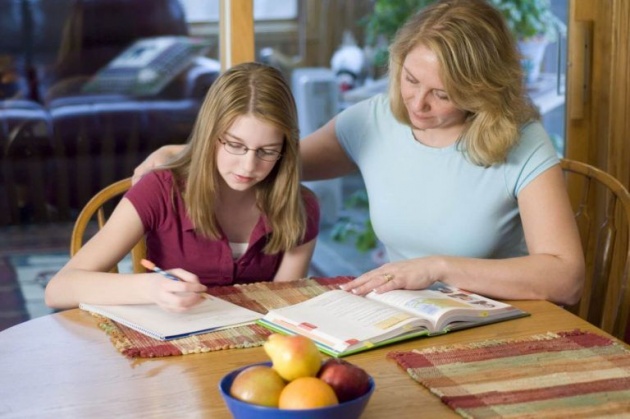Most people have heard the phrase ‘random acts of kindness’, which refers to a selfless act of giving resulting in the happiness of another person. Terms like this are increasing in popularity around the world, as more people identify a deficiency in their lives that can only be fulfilled by altruism.
It seems we just can’t get enough of those addictive feel good emotions and with good reason.
Scientific studies have shown that kindness has a great number of physical and emotional benefits, and that children require a healthy dose of the warm and fuzzies in order to flourish as health, happy, well-rounded individuals.

Patty O'Grady, PhD, is an expert in the area of neuro science, emotional learning, and positive psychology with special attention to the educational arena. She believes that “kindness changes the brain by the experience of kindness. Children and adolescents do not learn kindness by only thinking about it and talking about it. Kindness is best learned by feeling it so that they can reproduce it. Kindness is an emotion that students feel and empathy is a strength that they share.”
A great number of benefits have been reported to support the theory of teaching kindness in schools:
1. Happy Children
Science explains that the good feelings we experience when being kind are produced by Endorphins that activate areas of the brain that are associated with pleasure, social connection and trust, and it’s proven that these feelings of joyfulness are contagious, encouraging more kind behavior by the giver and recipient.

2. Increased Peer Acceptance
Research on the subject has determined that kindness increases our ability to form meaningful connections with others. Studies show that kind, happy children enjoy greater peer acceptance because they are well-liked and that better than average mental health is reported in classrooms that practice more inclusive behavior due to an even distribution of popularity.

3. Improved Health and Less Stress
It’s widely documented that being kind can trigger a release of the hormone oxytocin which has a number of physical and mental health benefits as it can significantly increase a person’s level of happiness and reduce stress. More recently though, it’s been found it plays a significant role in the cardiovascular system, helping protect the heart by lowering blood pressure and reducing free radicals and inflammation, which incidentally speed up the aging process.
4. Greater Sense of Belonging and Improved Self Esteem
Studies show that people experience a ‘helpers high’ when they do a good deed, a rush of endorphins that creates a lasting sense of pride, wellbeing and an enriched sense of belonging. Even small acts of kindness are reported to heighten our sense of wellbeing, increase energy and give a wonderful feeling of optimism and self worth.
5. Increased Feelings of Gratitude
When children are part of projects that help others less fortunate than themselves, it provides them with a real sense of perspective and helps them appreciate the good things in their own lives.

6. Better Concentration and Improved Results
As it increases serotonin, which plays an important part in learning, memory, mood, sleep, health and digestion, kindness is a key ingredient that helps children feel good. Having a positive outlook allows them greater attentions spans and enables more creative thinking to produce better results at school.
7. Less Bullying
Two Penn State Harrisburg faculty researchers, Shanetia Clark and Barbara Marinak say, “unlike previous generations, today’s adolescents are victimizing each other at alarming rates.” They argue adolescent bullying and youth violence can be confronted through in-school programs that integrate “kindness — the antithesis of victimization.”
Many traditional anti-bullying programs focus on the negative actions that cause children anxiety and often with little impact. Teaching kindness and compassion in schools, not only fosters the positive behavior that creates warm and inclusive school environments, but helps children feel that they belong. It’s documented that the effects of bullying can be significantly reduced by integrating kindness based programs in schools.

8. Reduced Depression
Dr. Wayne Dyer, internationally renowned author and speaker, says research has discovered that an act of kindness increases levels of serotonin (a natural chemical responsible for improving mood) in the brain. It’s also found that serotonin levels are increased in both the giver and receiver of an act of kindness, as well as anyone who witnesses that kindness, making it a wonderful natural antidepressant.
Maurice Elias, a professor at Rutgers University Psychology Department says that “as a citizen, grandparent, father, and professional, it is clear to me that the mission of schools must include teaching kindness. Without it, communities, families, schools, and classrooms become places of incivility where lasting learning is unlikely to take place.

We need to be prepared to teach kindness, because it can be delayed due to maltreatment early in life. It can be smothered under the weight of poverty, and it can be derailed by victimization later in life. Yet despite these and other travails, the receipt of kindness and the ability to show kindness through service are both growth enhancing and soul cleansing.
Kindness can be taught, and it is a defining aspect of civilized human life. It belongs in every home, school, neighborhood, and society.”
It’s become quite clear that modern education must encompass more than just academics, that in order for children to develop into happy, confident, well-rounded individuals, matters of the heart must be taken seriously and nurtured as a matter of priority.

One of the big questions most new home school teachers ask is, “How will I know if my child is learning?”
When a child is in public school he or she is constantly tested. Each week there are spelling tests, there are chapter tests on a regular basis, and in many states there is standardized testing. Many parents of public school students decide that if the grades coming home on test papers and report cards are good, then their child must be learning.

When students are pulled from a traditional school setting and placed in homeschooling it is sometimes difficult for the parent to know if the student is actually learning enough to keep up with their grade peers. A big problem is that home school students tend to not be tested as often as public school students. But is it really a problem and is testing the only way to know if a student is learning enough?
How Long?
Sometimes it is difficult to tell if a child is learning enough in home school because homeschooling generally takes much less time than traditional education. Home schooled children generally do not spend as much time on a particular topic as traditionally educated students because they are neither ahead nor behind their classmates. Part of the reason for this is that your home schooled child is receiving one-on-one attention. They do not have to wait for others to catch up, nor are they holding up other students back if they need to spend more time on a topic. If the student understands the topic then he or she can move on right away.

Traditional education is set up for a traditional school year, in many states that is approximately 180 school days. That is, for each subject an hour of instruction per day for 180 days, or 180 hours per subject. Now, consider this question: Is a public school hour of instruction really an hour? Students must move from class to class, spending time talking to peers, going to lockers, and moving between classrooms and even buildings. A traditional school hour of education might be as short as 45 minutes by the time moving, getting settled, and ready to actually learn are taken into account.
Home school children can take almost all of that transition time out of their day. The commute from math at the kitchen table to history on the sofa takes considerably less time than moving from one end of a building to another and climbing a flight of steps or two. When was the last time you heard of a traditionally educated student actually finishing a complete textbook in a year? It is safe to say that a home schooled student can probably cover more material in a school day than traditional educated students can. It is not unusual for a home schooled student to complete the entire course in a home school curriculum.
Testing?
Home schooled students generally do not take as many tests as public school students do. Consequently, less time is spent teaching “to the test”. Teaching to the test limits a student’s exploration of a subject by limiting them to the material that will be tested. Testing is not necessarily a true measure of understanding of a topic.
In fact, standardized tests can be detrimental to students who are from different backgrounds and upbringings. Consider, for example, a standardized test question that asks reasons for the Civil War. Since the Civil War is viewed differently by different ethnicities, as well as different locations, a question designed to show understanding of the reasons behind the war might not realistically test a student’s knowledge.

Another problem with standardized testing is that some students are very test savvy, understanding how to take tests well even if they do not understand the subject matter. Other students are poor test takers and do not do well under the pressures of timed tests. A low score by a poor test taker is not a true measure of their knowledge or learning ability, only their testing abilities.
You’ll know!
It sounds cheesy to say that you will know if your child is learning but the reality is that you will know if your child is learning. You can see it on their faces, you can tell by their attitude, and you will see forward progress.
If your student begins their home school day ready to go to school, moves quickly through their assignments, and is hungry for more information, it is safe to say that the student is learning.
If your student can not only give you the instructed materials on a multiple choice test, but can hold a conversation about the material you will know they understand the material. When a student can play the part of the teacher, either giving a speech, or teaching other children in a subject, then that student will have sufficient knowledge of a subject to move on to new material.
Finally, as the parent as well as the teacher it is possible to see the student in all stages of learning. You will not have to depend on a report card, or a test score. You will see your student work through the instructional material, watch them answer questions, and be able to judge for yourself if your student is actually learning.



